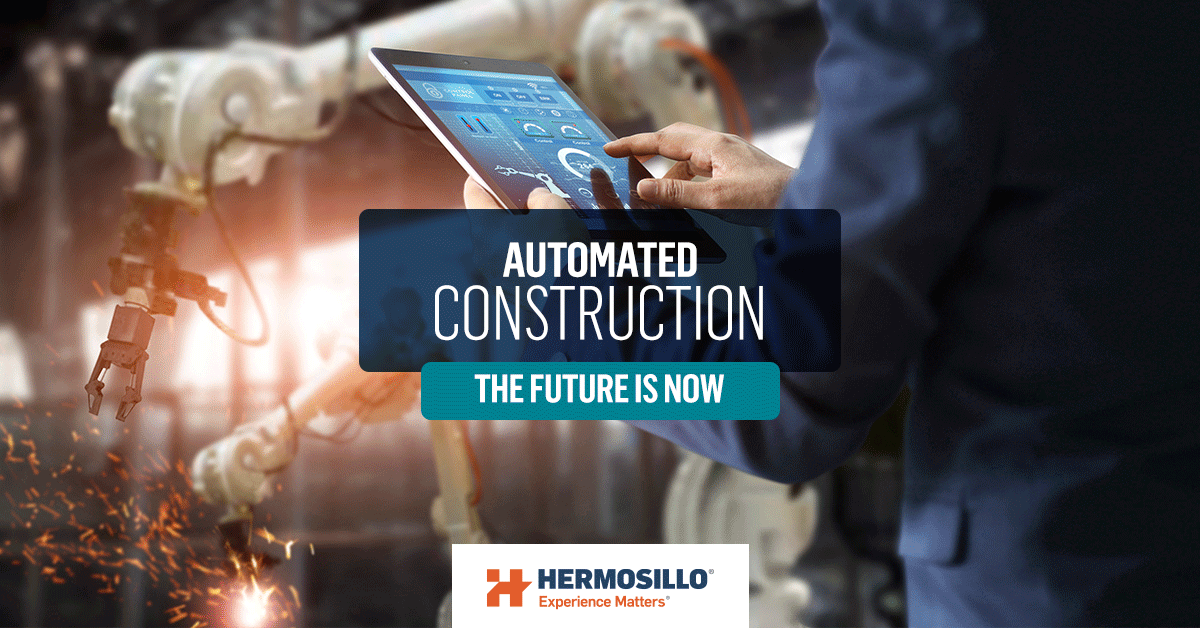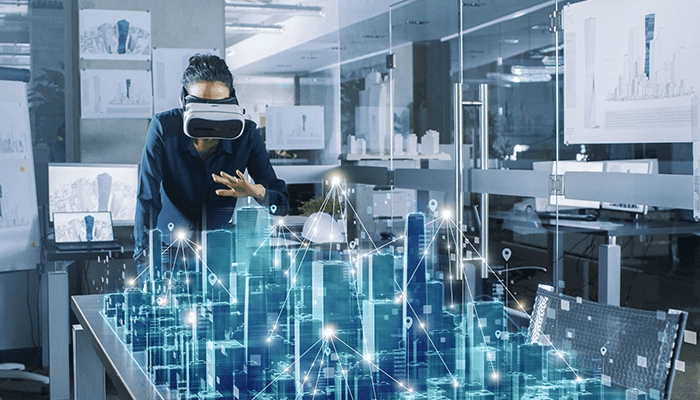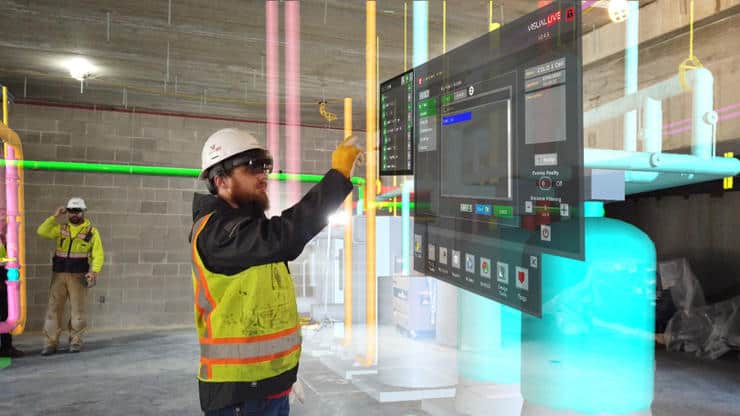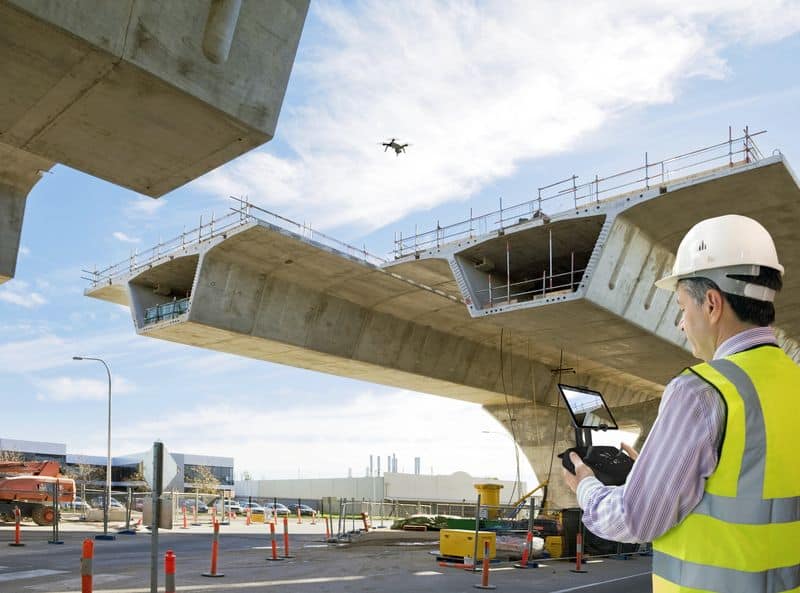
The construction industry is evolving naturally from digitalization to automation. As expected, nevertheless, construction is very complex, many people are involved, and its activities are wide: budgeting, planning, design, management, optimization, etc. This level of complexity makes the construction industry vulnerable to many potential pitfalls.
That’s why it’s no novelty that this activity is known for being one of the most wasteful and inefficient industries. However, now contractors are looking for improvements in processes, seeking efficiency.
They’ve found out that technology enhances the construction experience by providing tools to integrate the complexity of the construction process. Contractors have been incorporating it gradually, but technology is advancing rather quickly. Now we have entered the era of Artificial Intelligence.
Artificial Intelligence (AI) is making automation in construction possible, and a bright future of efficiency lights ahead. This blog post will explain how AI can impact the construction industry and the bases to make it a reality.

The Path to Automation: Data Management and Digitalization
The bases of automation are data. You can’t correctly automate a task if you don’t have a historical record of how that task should be performed. You’re teaching the computer how to think by showing how you have performed it.
Automation means teaching a computer to think like a human, so it can process data the way a human would. So, how can you make this possible?
Data Management in Construction
You must gather reliable data. In construction, data recollection is challenging because there is a lot of information at every step of the process, such as:
- Design and construction
- Management systems
- Infrastructure and transport systems
- Procurement
- Scheduling
- Maintenance
- Cost management
- Resource management
For this reason, it’s essential to establish rigorous documentation frameworks to keep everything updated.
Many contractors fail with this task because of the lack of an ideal data strategy. An Autodesk study showed that over 30% of USA firms consider that 50% of their data is terrible.
Data management requires discipline and consistency. We have found a LEAN Construction way in which the core management approach seeks for gathering information to be more accessible. Because of this, at Hermosillo, we ensure that everyone involved in a construction project understands the LEAN Construction framework in its conceptual and practical sense.
Digitization of Construction Management
Digitalization of data is the foundation of current project management. Some software programs help you store the large amounts of data you generate. The goal of going into the digital world is to gather data on every process in construction in order to make better decisions. According to McKinsey Global, digital transformation can result in productivity gains of 14% to 15% and cost reduction of 6% to 4%.
In Hermosillo, we use BIM to centralize information of every team involved in the project. As a result, we have a main, standardized, real-time source of information, which allows us to make well-informed decisions on time.

Automation and AI in the Construction Industry
AI aims to further the benefits of digitalization. We are now talking about predictive analysis, valuable intelligence, and automation of tasks that would typically take additional work hours.
It all comes down to AI allowing contractors to make the more accurate decision in a short amount of time. As a result, they could generate safer projects, reduce and optimize resources, and increase efficiency. Artificial Intelligence can impact the entire supply chain, from the production of construction materials, design, planning, and development to project management.
But how is this possible? AI mimics the problem-solving capabilities of a human by creating and applying algorithms to a dynamic computing environment.
AI is like an intelligent assistant that helps review all the information regarding a project and emphasize what is essential. These are the four main areas where we consider Artificial Intelligence can enhance the construction process:
- Generative design: AI generative design can develop design alternatives based on knowledge from previous projects in your database. Through machine learning, you can gather insights from the last construction data to figure out patterns in your work.
This software also allows designers to input parameters like cost constraints and special requirements so that they can generate the result that best fits their project goals.
In Hermosillo, we use generative design to analyze many possible scenarios. We propose different alternatives for a project until we reach the most accurate result for our client. We use the generative design on layout proposals, earthworks design, multi-story buildings, tilt-up wall distribution, and flows of people and vehicles per project. AI makes this work smoother because it runs the alternatives according to the client’s needs among multiple scenarios, giving the best possible solution from the early design stages.
- On-site work: Artificial intelligence can increase productivity in tasks where labor is short. Self-driving machines are starting to perform repetitive tasks like pouring concrete, demolition, and bricklaying very effectively. Also, drones can leverage the visualization of the project by making 360-degree laser scans and image recordings.
AI can also assist in making the construction site safer. With machine learning and predictive analytics, Artificial intelligence technologies can analyze multiple scenarios and determine possible machine failures that can cause potential hazards.
- Sustainability: According to Lerma Gray, “AI-powered software can analyze data from IoT sensors like heating and ventilation to determine the energy used.” AI software can detect facility parts that are not in use and automatically deactivate air conditioning, making possible the intelligent distribution of energy through your project life cycle.
- Data visualization: AI serves as a technological resource that offers users interactive experiences with the support of digital devices such as tablets, webcams, and mobile phones. In Hermosillo, we merge the digital & physical to give our client a new level of understanding of the project. With Enhanced Reality, we can create walkthrough experiences on-site that accurately showcase the finished project using a 3D united model (also called a federated model). Here, users can perform multiple actions by interacting with digital content through complete immersion in the architectural, structural, and MEP (utilities) elements of their project.

Wrapping Up…
The future is catching up. Artificial Intelligence is giving us the tools to build more efficiently by providing valuable intelligence in a short time. If the goal is to build safer, smarter, and more efficiently, it all comes down to learning how to adapt and upgrade the frameworks we normally operate with.
AI has allowed us to offer quality experiences to our clients. We can now generate diverse design alternatives per project, allowing us to choose the most accurate solution. Additionally, we’ve been able to build safer and smarter by detecting potential risks on time, coupled with on-site monitoring thanks to the management with pre-established flows for documentation such as requests for Information (RFIs) and client approvals (submittals), with reports and dashboards created automatically from BIM 360 platform.






